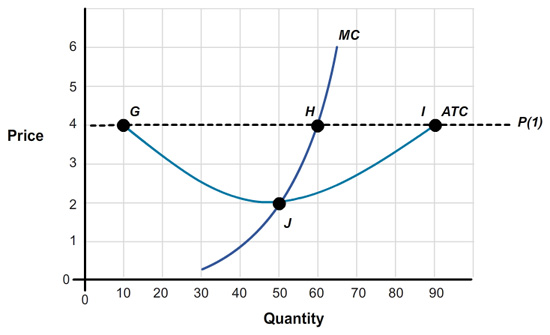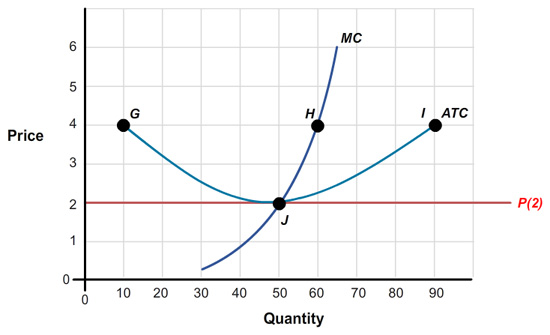Question 1 of 13
Step 1
Consider the following graph: The graph represents a competitive firm. The marginal cost (MC) curve, average total cost (ATC) curve, and price (P) line corresponding to each level of output (Q) are given in the graph.

A competitive firm maximizes profits if P equals .
Step 2

If P = $4, point determines the profit-maximizing quantity.
Step 3

If P = $4, the profit-maximizing quantity in this graph is units.
Step 4

If P = $4 and Q = 60 units, how much is this firm’s revenue? Answer using a whole number. $
Step 5

In this graph, ATC at Q = 60 units is closest to .
Step 6

If Q = 60 units and ATC = $2.25, how much is this firm’s total cost (TC)? Answer using a whole number. $
Step 7

If Q = 60 units and ATC = $2.25, how much is this firm’s profit? Answer using a whole number. $
Step 8

In the long run, a competitive firm maximizes profits if P equals MC, equals .
Step 9

In this graph, minimum ATC occurs when P = .
Step 10

If P = $2, the profit-maximizing quantity in this graph is units.
Step 11

If P = $2 and Q = 50, how much is this firm’s revenue? Answer using a whole number. $
Step 12

If Q = 50 units and ATC = $2.00, how much is this firm’s total cost (TC)? Answer using a whole number. $
Step 13

If Q = 50 units and ATC = $2.00, how much is this firm’s profit? Answer as a whole number. $